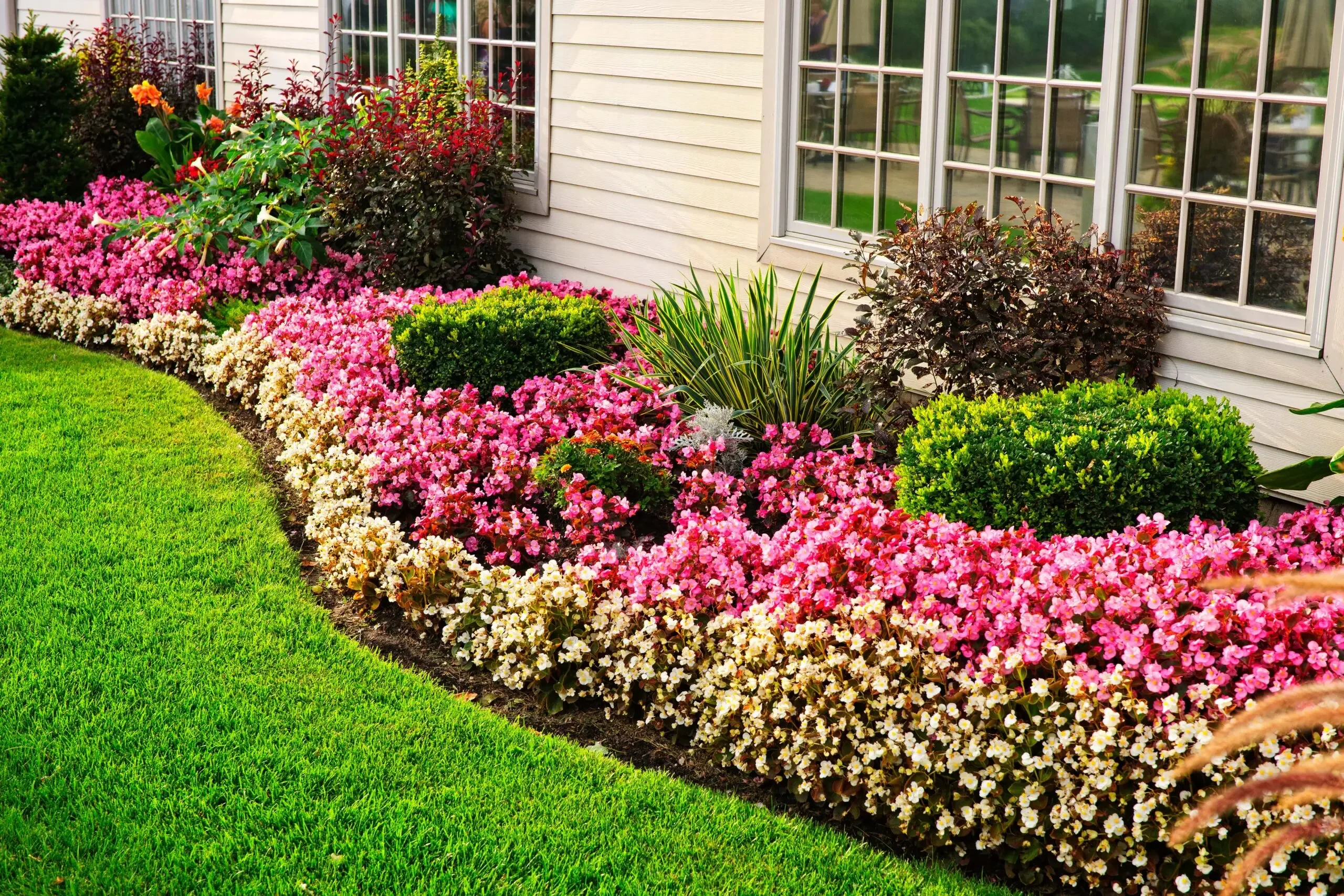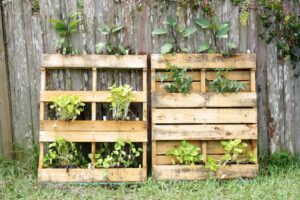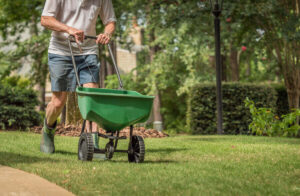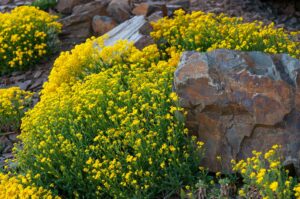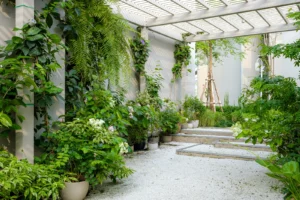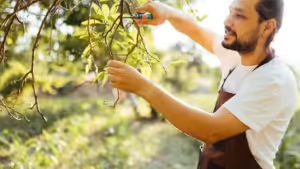Transform Your Curb Appeal: Inspiring Front Garden Bed Ideas
Creating a stunning front garden bed is one of the most impactful ways to enhance your home’s curb appeal and make a lasting first impression. Whether you’re looking to design circular flower beds, renovate existing landscaping, or start from scratch with a new front yard garden, thoughtfully designed plant beds can dramatically transform your home’s exterior.
Why Front Garden Beds Matter
Front garden beds serve as the frame for your home, creating a visual transition between the structure and the surrounding landscape. Well-designed flower beds can:
- Highlight architectural features of your home
- Create a welcoming entrance for visitors
- Add seasonal color and interest throughout the year
- Increase property value through improved curb appeal
- Support local pollinators and wildlife
- Reduce lawn maintenance areas
“The front garden is essentially your home’s handshake with the world,” says landscape architect Maria Gonzalez. “It sets expectations for what lies beyond and reflects the personality of the homeowners.”
Planning Your Front Garden Bed
Before breaking ground on your front yard landscaping project, consider these essential planning steps:
Assess Your Site
Understanding your specific growing conditions is crucial for success:
- Sunlight exposure: Track how many hours of sun different areas receive
- Soil quality: Test your soil pH and composition
- Drainage patterns: Observe where water flows after rain
- Existing features: Note architectural elements, walkways, and mature trees
- Viewing angles: Consider how the garden will look from the street and from inside your home
Define Your Style
Your front garden should complement your home’s architecture:
- Formal gardens feature symmetrical designs, clipped hedges, and geometric patterns that pair well with traditional or colonial architecture
- Cottage gardens with their abundant, slightly untamed flowering plants suit craftsman or country-style homes
- Modern landscapes emphasize clean lines, architectural plants, and minimalist designs for contemporary homes
- Naturalistic gardens incorporate native plants in relaxed groupings for prairie-style or environmentally-focused homes
Consider Scale and Proportion
Size matters in front yard garden beds:
- For small front yards, consider raised beds or container groupings to maximize impact
- Larger properties may support multiple garden beds with pathways between them
- The width of beds should generally be proportional to your home’s façade
- Allow enough space between plants for mature growth to prevent overcrowding
Inspiring Front Garden Bed Designs
Let’s explore some innovative approaches to front yard landscaping that can transform your curb appeal.
Circular Flower Bed Design
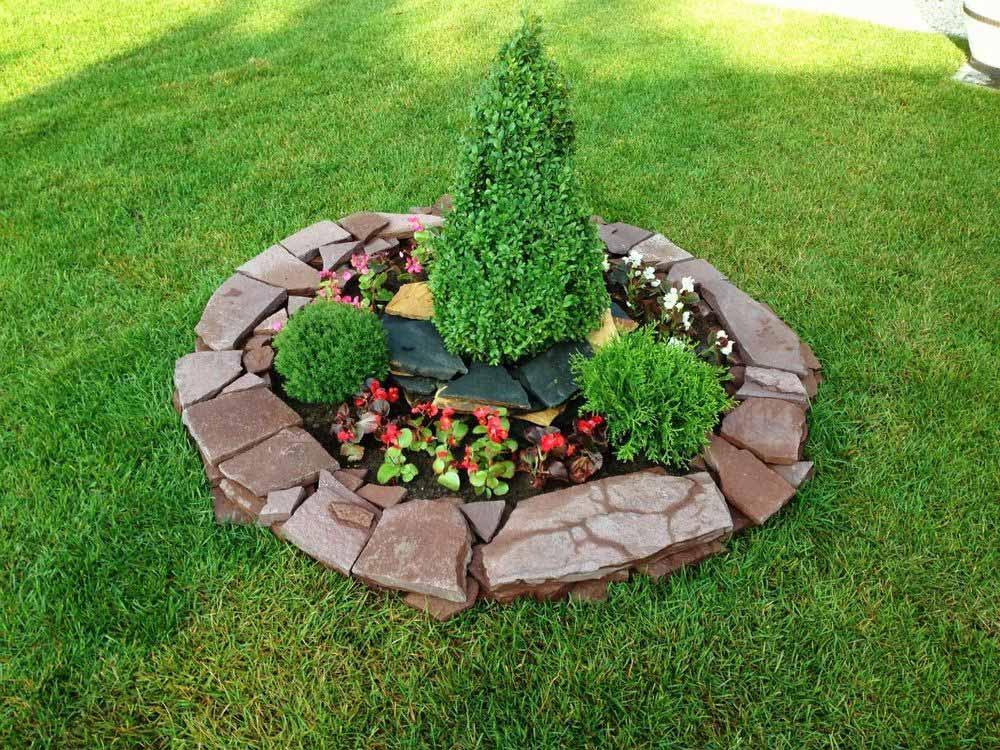
Circular flower beds create a focal point and bring graceful curves to front yard landscapes.
Key design elements:
- Create concentric planting circles with taller plants in the center
- Use a central feature like an ornamental tree, large decorative grass, or garden sculpture
- Plant in a spiral pattern for dynamic visual movement
- Border with low-growing plants or hardscape materials
Landscape designer Jonathan Taylor recommends, “When designing circular beds, think in terms of a clock face for plant placement. This helps ensure balanced distribution around the circle while maintaining visual interest from all viewing angles.”
Plant selections for circular beds:
- Center: Japanese maple, dwarf conifer, or large ornamental grass
- Middle ring: Hydrangeas, roses, or tall perennials like coneflowers and salvias
- Outer ring: Ground covers, low-growing sedums, or flowering plants like dianthus
Layered Border Garden Beds
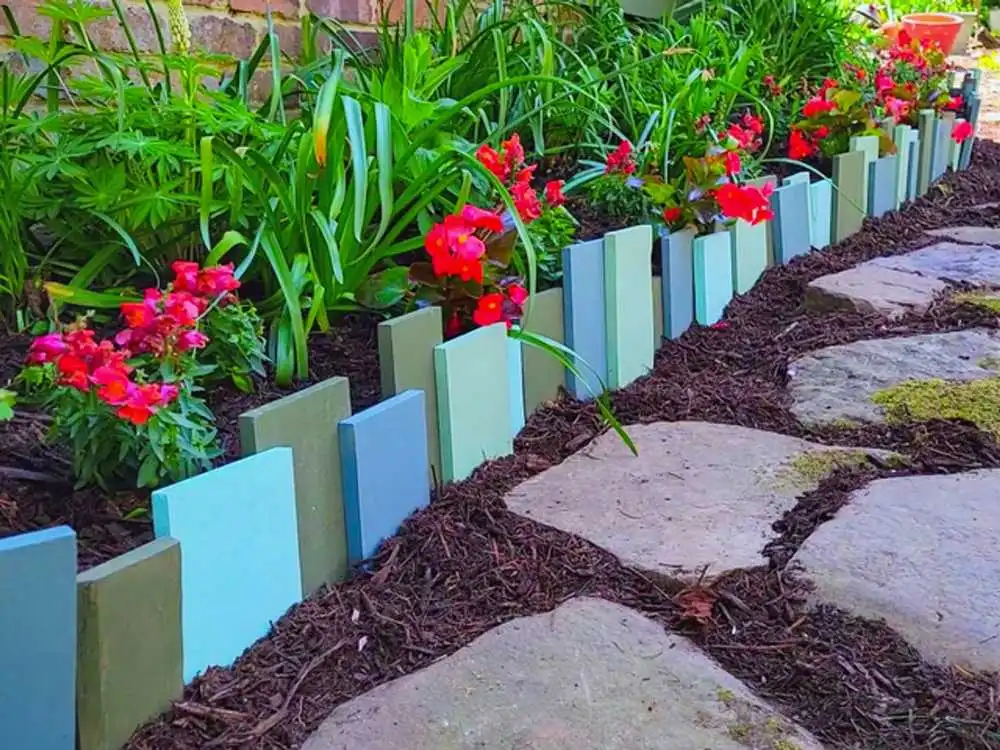
Layered garden beds create depth and seasonal interest along driveways or property boundaries.
Design approach:
- Create three distinct planting zones from back to front
- Plant tallest specimens at the back, mid-height plants in the middle, and ground covers in front
- Incorporate varying textures and forms for visual interest
- Include evergreen structural plants for year-round appeal
Suggested plant combinations:
- Back layer: Ornamental trees, tall shrubs, or architectural perennials
- Middle layer: Flowering shrubs, ornamental grasses, and medium-height perennials
- Front layer: Ground covers, spring bulbs, and low-growing flowering plants
Foundation Planting Beds
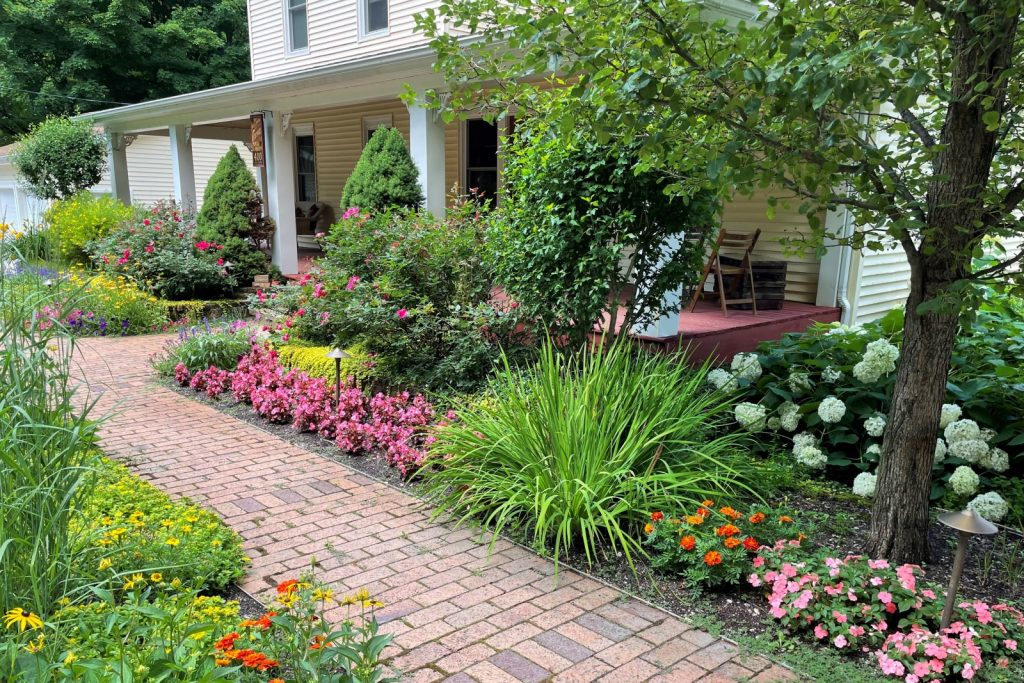
Foundation plantings soften the transition between your home and the landscape.
Design considerations:
- Scale plantings to home size (taller plants at corners, lower plants under windows)
- Leave 18-24 inches between mature plants and your home’s foundation
- Create year-round interest with a mix of deciduous and evergreen plants
- Use odd-numbered plant groupings for a natural appearance
Foundation planting ideas:
- Corner anchors: Dwarf evergreen trees or larger shrubs
- Window areas: Low-growing shrubs or perennials that won’t block views
- Entrance focus: Symmetrical plantings or containers to frame the door
- Transitional areas: Flowering shrubs to connect corner and entrance plantings
Mixed-Use Front Yard Gardens
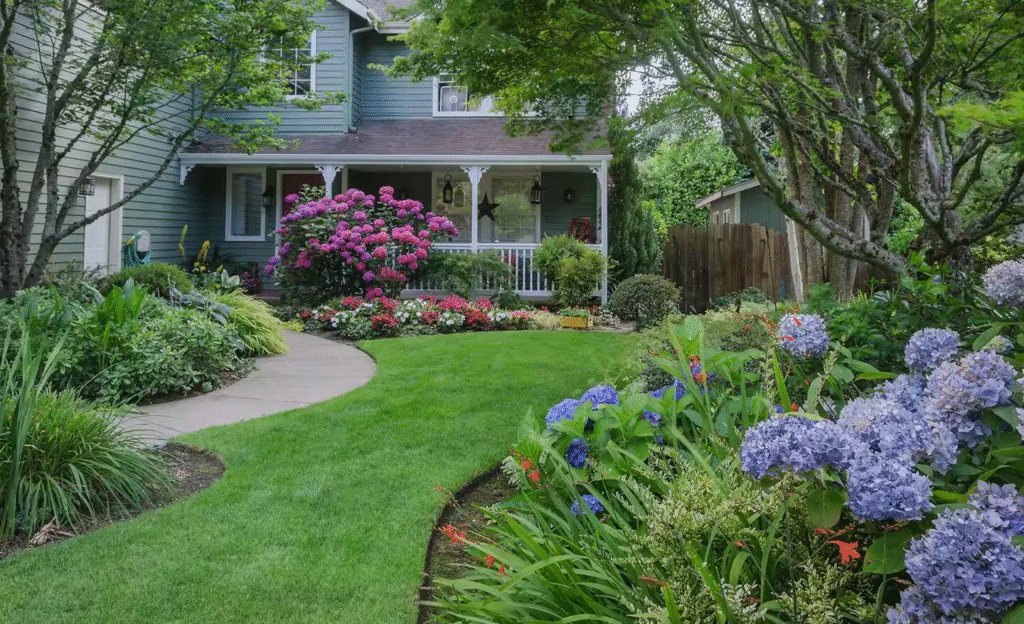
Modern front gardens often combine ornamental and edible plantings.
Design strategies:
- Integrate herbs and compact vegetables among ornamental plants
- Use attractive edibles like rainbow chard, purple basil, or ornamental peppers
- Create structured beds with defined edges for a tidy appearance
- Incorporate dwarf fruit trees as ornamental specimens
Master Gardener Elena Rivera explains, “The key to successful edible front gardens is deliberate design. Use strong hardscape elements like raised beds, defined pathways, and quality edging to keep the garden looking intentional rather than haphazard.”
Native Plant Garden Beds
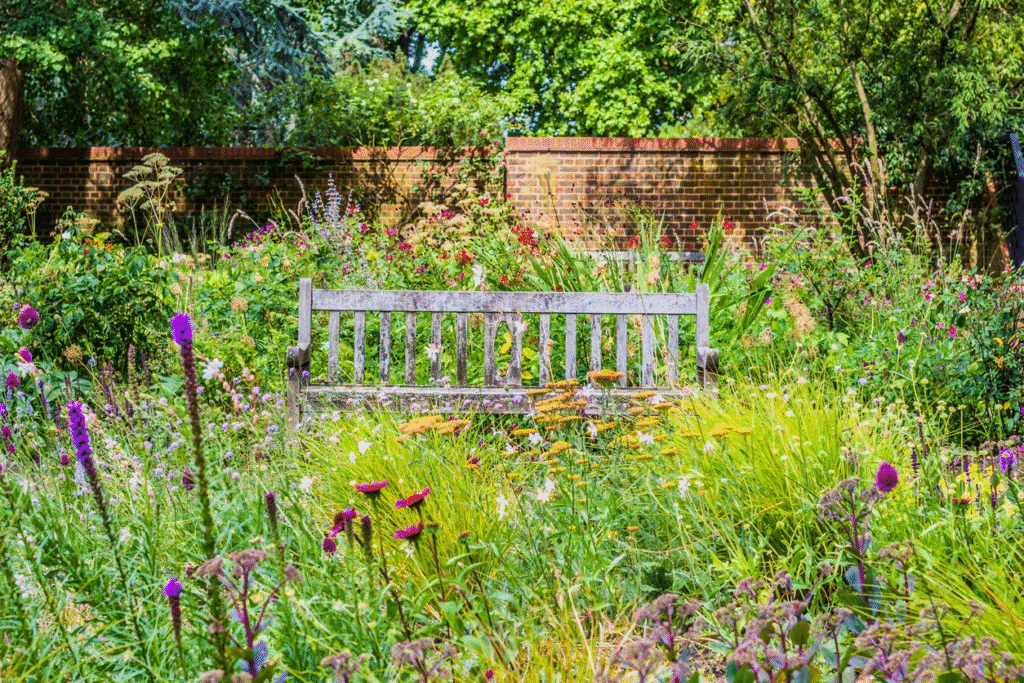
Ecological gardens feature regional native plants adapted to local conditions.
Benefits of native plant beds:
- Reduced water and maintenance requirements
- Support for local pollinators and wildlife
- Four-season interest with natural succession
- Distinctive regional character
Design approaches:
- Research plant communities native to your region
- Group plants with similar water and light requirements
- Include a mix of flowering perennials, grasses, and woody plants
- Consider mature plant size and seasonal interest when placing
Creative Elements for Front Garden Beds
Enhance your front yard landscaping with these design elements that elevate ordinary garden beds to extraordinary displays.
Hardscape Integration
Thoughtfully integrated hardscape elements create structure and enhance plant displays:
- Stone borders define bed edges and prevent lawn encroachment
- Stepping stones create access for maintenance
- Boulders provide elevation changes and focal points
- Dry creek beds manage drainage while adding visual interest
- Retaining walls create terraced planting opportunities
Seasonal Color Planning
Design your front garden beds for year-round appeal:
- Spring: Incorporate bulbs like tulips, daffodils, and alliums
- Summer: Feature perennials with extended bloom periods
- Fall: Include plants with autumn foliage color and late-season flowers
- Winter: Plan for structural interest with evergreens, ornamental bark, and persistent seedheads
Garden designer Thomas Chen advises, “When planning for seasonal interest, aim for at least three plants that shine in each season. Overlap bloom times to ensure continuous color, and remember that foliage and form are just as important as flowers.”
Vertical Elements
Add height to your front garden beds:
- Trellises for climbing plants like clematis or climbing roses
- Obelisks as ornamental features and plant supports
- Tall architectural plants like ornamental grasses or columnar shrubs
- Garden art that draws the eye upward
- Small ornamental trees as focal points
Lighting Design
Extend the enjoyment of your front garden into evening hours:
- Path lights to illuminate walkways
- Uplights to highlight specimen plants or architectural features
- Wash lighting on textured surfaces like stone walls
- Low-voltage systems for energy efficiency and flexibility
- Solar options for areas without easy access to electrical outlets
Problem-Solving Front Garden Bed Ideas
Address common landscape challenges with these targeted front yard solutions.
Sloped Front Yard Gardens
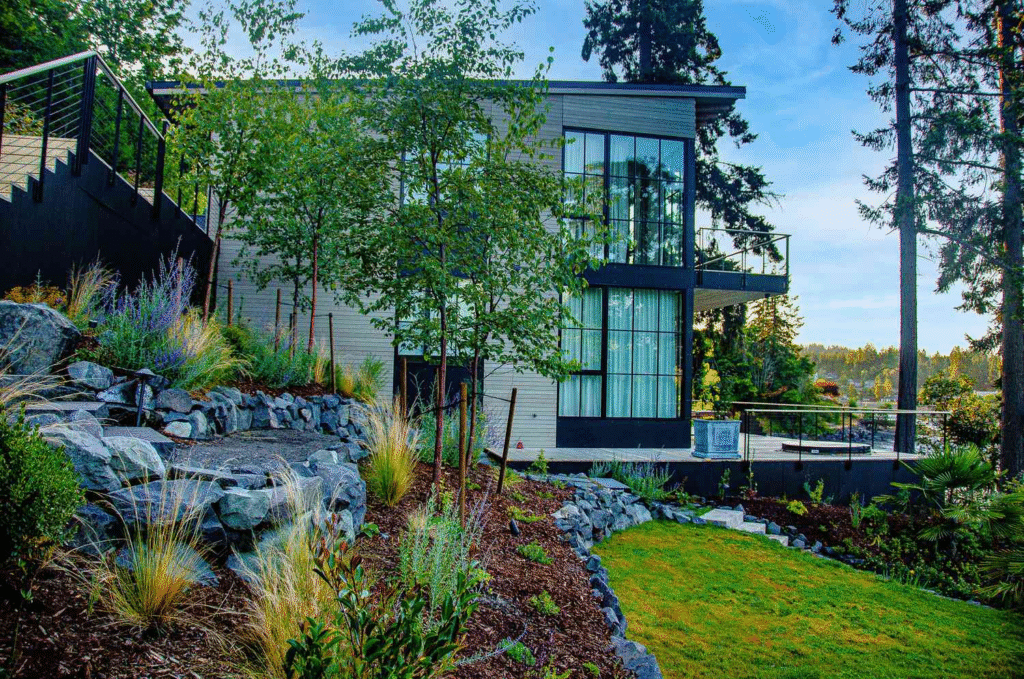
Transform challenging slopes into stunning garden features:
- Create terraced beds with retaining walls for level planting areas
- Install drought-tolerant plants on south-facing slopes
- Use ground covers and spreading perennials to prevent erosion
- Incorporate steps integrated with planting pockets
- Design swales and berms to manage water flow
Shade Garden Solutions
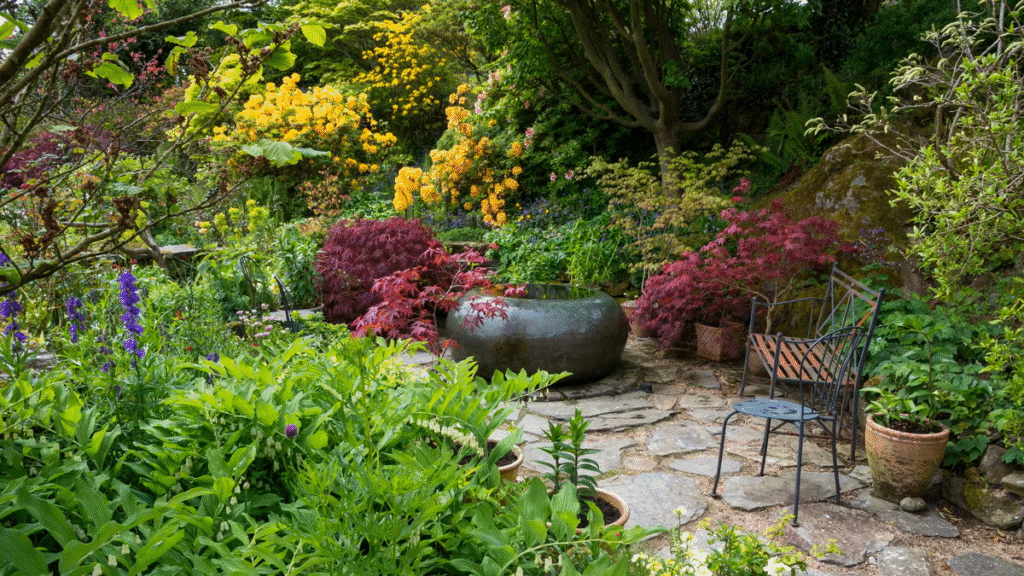
Make the most of north-facing or tree-covered front yards:
- Focus on foliage variety rather than abundant flowers
- Incorporate shade-loving perennials like hostas, ferns, and heuchera
- Add spring ephemerals that bloom before trees leaf out
- Use white, silver, and light-colored plants to brighten dark areas
- Include shade-tolerant shrubs like hydrangeas for structure
Drought-Tolerant Designs
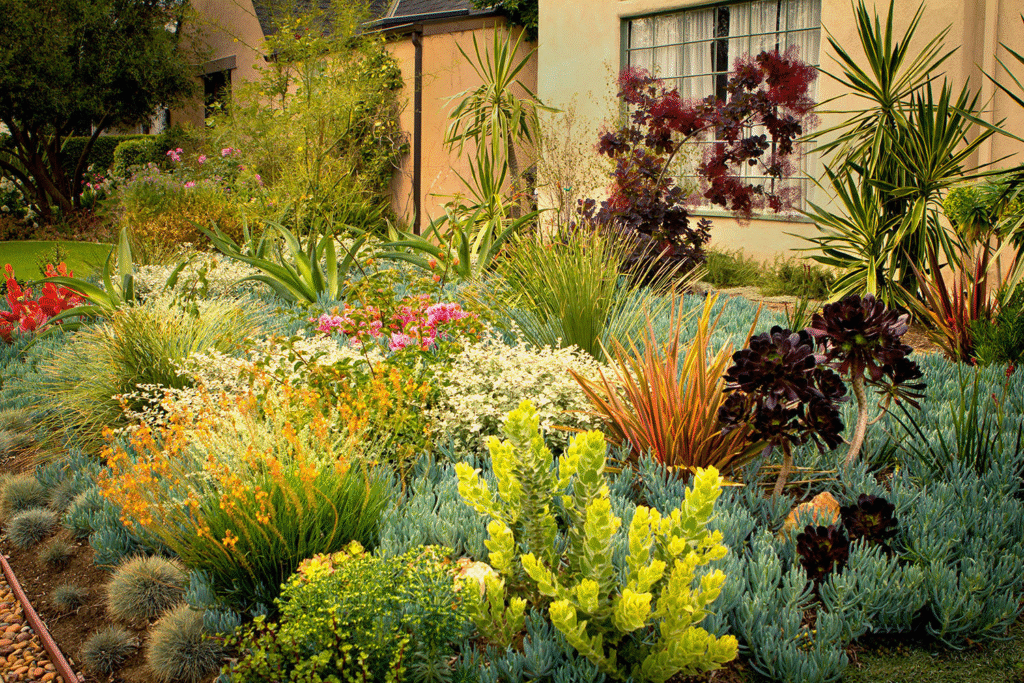
Create water-wise front gardens for arid regions:
- Implement xeriscaping principles with appropriate plant selection
- Group plants with similar water requirements
- Use gravel, decomposed granite, or mulch to reduce evaporation
- Incorporate rainwater harvesting features
- Select regionally appropriate drought-tolerant plants
Landscape architect Carlos Rodriguez notes, “The most successful drought-tolerant gardens don’t look dry or sparse. The key is to choose plants with interesting forms, textures, and foliage colors that create visual abundance without requiring abundant water.”
Step-by-Step Front Garden Bed Creation
Follow these steps to implement your front yard garden bed ideas:
1. Create a Detailed Plan
- Measure your space and create a scaled drawing
- Mark existing features like trees, utilities, and walkways
- Design bed shapes and sizes that complement your home
- Create a plant list with quantities and spacing requirements
- Calculate material needs for soil, mulch, and edging
2. Prepare the Site
- Remove existing turf and weeds
- Improve soil with appropriate amendments based on soil test results
- Install any necessary drainage solutions
- Edge garden beds with your chosen material
- Apply a pre-emergent weed control if appropriate for your planting timeline
3. Install Hardscape Elements
- Add any structural elements like retaining walls or raised beds
- Place larger boulders or focal point features
- Install irrigation systems if planned
- Create pathways and access points for maintenance
- Position lighting fixtures (without connecting electrical components)
4. Plant According to Plan
- Position plants while still in containers to confirm layout
- Plant largest specimens first, then medium-sized plants, finishing with ground covers
- Follow proper planting techniques for each plant type
- Water thoroughly after planting
- Apply 2-3 inches of mulch, keeping it away from plant stems
5. Maintain and Evolve
- Follow a regular watering schedule for the first growing season
- Monitor for pest and disease issues
- Prune and deadhead as needed
- Document seasonal changes to identify improvement opportunities
- Adjust plantings as the garden matures
Expert Tips for Successful Front Garden Beds
Professional landscapers and garden designers offer these insights for exceptional front yard gardens:
- Create movement with plant selection: “Use plants that respond to breezes, like ornamental grasses, to add kinetic energy to front gardens,” suggests landscape designer Sarah Johnson.
- Consider viewing distances: “Remember that front gardens are often viewed from the street or driveway. Choose plants with bold forms and colors that make an impact from a distance,” advises horticulturist Michael Lee.
- Limit the color palette: “For a cohesive, designer look, restrict your plant selection to three main colors plus green,” recommends garden writer Rebecca Martinez.
- Create rhythm and repetition: “Repeat key plants throughout the garden to lead the eye and create cohesion, but vary their groupings to avoid monotony,” says landscape architect David Wilson.
- Design for maintenance levels: “Be honest about how much time you want to spend maintaining your front garden and choose plants accordingly,” cautions garden coach Lisa Thornton.
Common Mistakes to Avoid
Even experienced gardeners can fall into these front garden bed pitfalls:
- Planting too close to the foundation: Leave 2-3 feet of space between mature plants and your home to prevent moisture problems and allow for maintenance access.
- Overcrowding plants: Account for mature size when planting to prevent competition and poor air circulation.
- Neglecting winter interest: Front gardens are visible year-round, so include structural elements and plants with winter appeal.
- Creating tiny, scattered beds: Small, isolated beds create a fragmented appearance. Consider fewer, larger beds for greater impact.
- Ignoring scale: Ensure plant selections match the scale of your home—small plants get lost against large homes, while overly large specimens can overwhelm smaller houses.
- Failing to edge beds properly: Distinct edges between lawn and garden beds create a polished, intentional appearance.
Sustainable Front Garden Practices
Today’s front garden beds should incorporate ecological principles:
- Reduce lawn areas to decrease water usage and maintenance requirements
- Choose native and adapted plants that support local wildlife
- Implement rainwater harvesting through rain gardens or collection systems
- Practice organic maintenance to protect beneficial insects and soil health
- Use locally sourced materials to reduce carbon footprint and reflect regional character
- Create habitat layers with trees, shrubs, and ground covers to support biodiversity
Front Garden Bed Ideas for Different Home Styles
Match your landscaping to your architecture for a cohesive appearance:
Colonial/Traditional Homes
- Symmetrical bed layouts
- Formal hedges and borders
- Classic plants like boxwood, hydrangeas, and roses
- Defined pathways with traditional materials
Craftsman/Bungalow Homes
- Asymmetrical but balanced bed designs
- Mixed perennial borders with naturalistic groupings
- Native plant selections
- Natural stone elements
Modern/Contemporary Homes
- Bold, geometric bed shapes
- Restrained plant palette with emphasis on form
- Architectural plants with strong silhouettes
- Clean-lined hardscape materials
Ranch/Mid-Century Homes
- Horizontal bed layouts that echo home lines
- Retro plant selections like yucca, agave, and ornamental grasses
- Gravel and decorative rock features
- Distinctive specimen plants as focal points
Final Thoughts on Creating Front Garden Beds
Your front garden is more than just landscaping—it’s a reflection of your home’s personality and your connection to the natural world. By thoughtfully designing garden beds that balance beauty with functionality, you create not only curb appeal but also habitat for wildlife, opportunities for seasonal enjoyment, and a welcoming entrance to your home.
Remember that the most successful front gardens evolve over time. Start with good bones—quality soil, appropriate hardscape, and key structural plants—then allow your garden to develop as you observe what thrives in your specific conditions and as your own preferences evolve.
With these front garden bed ideas as inspiration, you can transform your yard into a landscape that delights the senses, supports the environment, and enhances your home’s architecture. The result will be a front garden that welcomes visitors, pleases neighbors, and brings you joy every time you arrive home.
